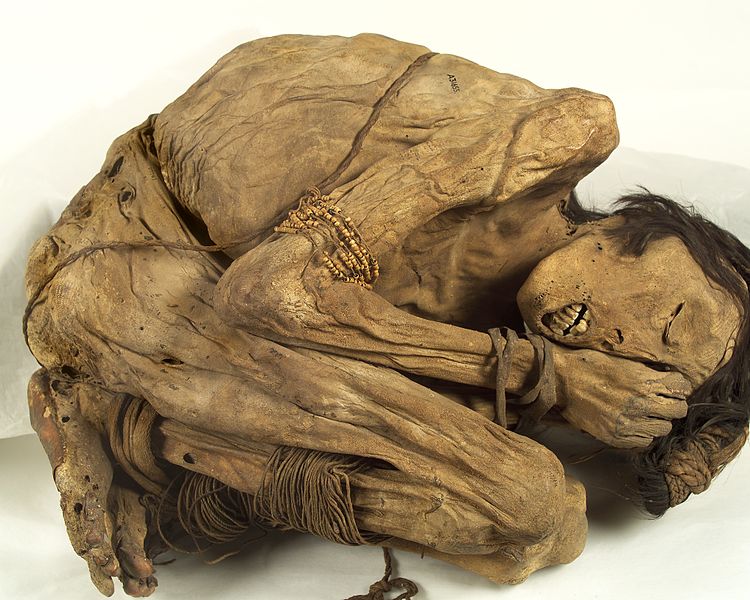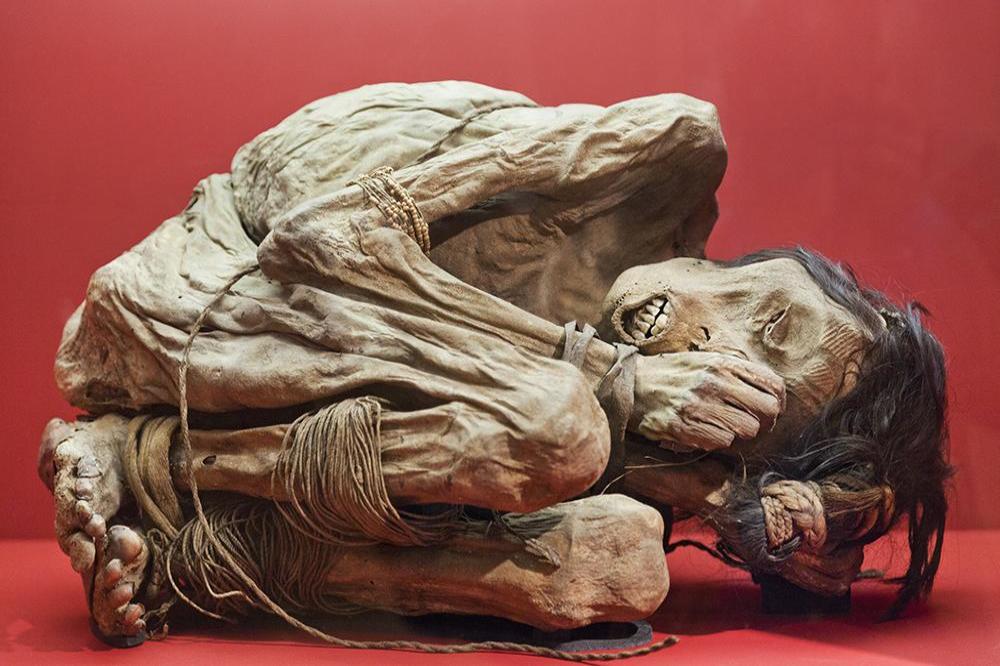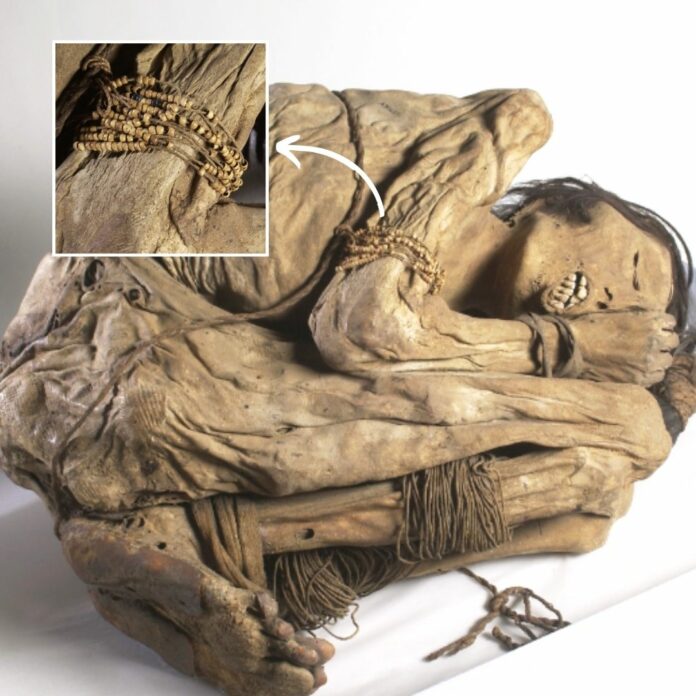In the arid sands of northern Peru, a silent sentinel lies buried, telling a tale of a world long vanished. This naturally preserved mummified male is a testament to the ingenuity and beliefs of the ancient Chimu culture. Curled up in a fetal position with hands and feet bound, this individual whispers tales of life, death, and the intricate tapestry of human belief.
Around the year 1300 AD, the Chimu mummy was carefully laid to rest. Unlike the elaborate mummies of Egypt, created through meticulous embalming techniques, the Chimu mummies were naturally desiccated by the dry desert climate. This process, combined with the Chimu’s custom of wrapping the deceased in layers of cotton and wool textiles, led to the incredible preservation of both the body and its artifacts.

The fetal position, a recurring motif in Chimu burials, is believed to symbolize rebirth and the return to the womb of Mother Earth. The bound hands and feet potentially represent a state of submission to the afterlife or a desire to restrain the deceased from returning to the world of the living. These practices highlight the Chimu’s complex understanding of death and their belief in a continuous cycle of life, death, and rebirth.
This mummy’s origin is likely the north coast of Peru, a region once dominated by the powerful Chimu Empire. This civilization flourished between 900 and 1470 AD, leaving behind a legacy of impressive architecture, intricate ceramics, and sophisticated metalworking techniques. The Chimu were highly organized, with a stratified social hierarchy and a strong belief in their ancestors. They worshipped a pantheon of deities, including the moon goddess Shi and the sea god Ni.

While the specific identity of the mummy remains a mystery, studying its physical features and associated artifacts can offer valuable insights into his life and social standing. By analyzing bone structure, teeth, and hair, scientists can determine his age, health, and possible diet. Examining any accompanying grave goods, such as textiles, pottery, or jewelry, can further reveal his cultural affiliation, social status, and occupation. Furthermore, studying the mummy’s DNA can provide clues about his ancestry, migration patterns, and even his susceptibility to certain diseases.
The Chimu mummy serves as a powerful reminder of the enduring human spirit and the importance of preserving our past. By studying this silent witness to history, we gain a deeper understanding of our ancestors, their beliefs, and the world they inhabited. This knowledge helps us appreciate the richness and diversity of human cultures and inspires us to protect our shared heritage for future generations.
In conclusion, the Chimu mummy is more than just a preserved body; it is a portal to a lost civilization, a window into the past that allows us to explore the complexities of human belief and the enduring legacy of ancient cultures. As we continue to learn from this remarkable individual, we gain a greater appreciation for the tapestry of human history and the profound connection that binds us all.




